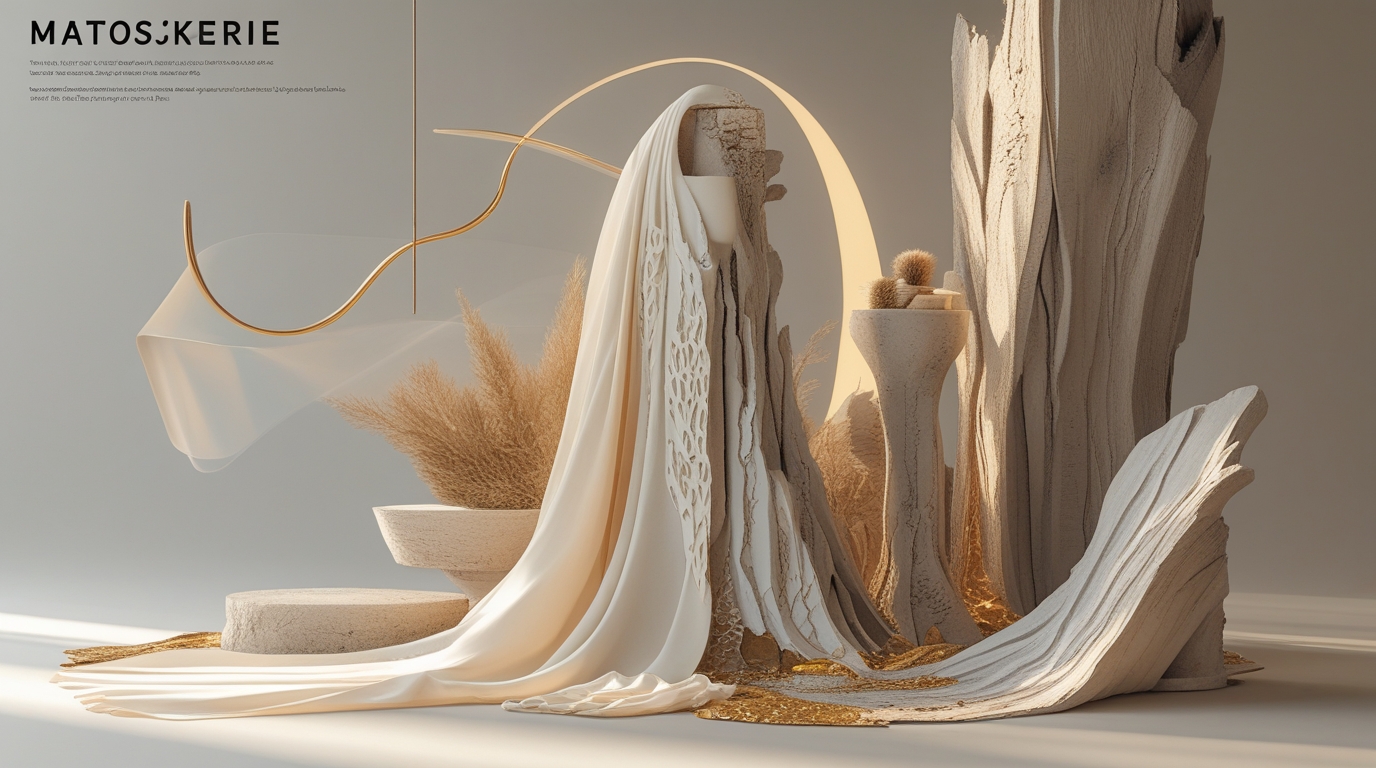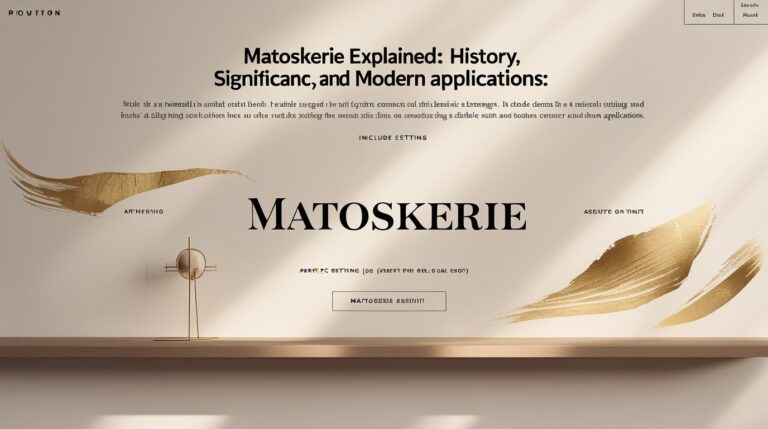In recent years, the term Matoskerie has started to circulate among creative communities, historians, and cultural researchers, sparking both intrigue and admiration. While it may sound contemporary, its roots trace far deeper than most people realize. Matoskerie represents a unique blend of heritage, creativity, and evolution, bridging traditional artistry with modern innovation.
To understand Matoskerie is to journey through time — exploring how an ancient idea transformed into a global phenomenon influencing design, craftsmanship, and even digital culture. This article delves deep into the origins, essence, and significance of Matoskerie, highlighting its enduring relevance in today’s fast-paced, tech-driven world.
The Origins of Matoskerie: A Cultural Legacy
The history of Matoskerie begins in small artisan communities known for their meticulous craftsmanship and attention to aesthetic harmony. While its exact birthplace remains debated, many cultural historians trace its beginnings to early European artisans who used the term to describe a delicate fusion of material mastery and artistic storytelling.
Matoskerie wasn’t merely an art form — it was a philosophy of balance. Each creation told a story, not just through texture and color but through emotion and meaning. Over centuries, the Matoskerie mindset evolved from craft workshops into design philosophies influencing fashion, architecture, and visual arts.
This foundation of meaning is what continues to make Matoskerie timeless — a living representation of human expression and artistry that transcends borders and generations.
The Philosophy Behind Matoskerie
What truly defines Matoskerie is not just its aesthetic beauty but its underlying philosophy of intentional creation. It represents a conscious effort to harmonize elements — whether materials, concepts, or emotions — into a unified whole.
Practitioners of Matoskerie often describe their work as “breathing life into form.” It’s not about producing perfection; rather, it’s about allowing imperfections to tell a story. This belief system mirrors principles found in Japanese Wabi-Sabi and Scandinavian Hygge, where authenticity and emotional connection outweigh rigid precision.
In essence, Matoskerie teaches that every creation, every idea, and every moment holds a form of beauty waiting to be unveiled through mindful design and craftsmanship.
Evolution of Matoskerie Through the Ages
The evolution of Matoskerie can be seen as a mirror reflecting society’s transition from handmade to machine-made, from local to global. During the Renaissance period, the spirit of Matoskerie was revived in the works of artists and thinkers who sought harmony between art and science. Later, during the Industrial Revolution, its principles were adapted to industrial design — blending function with form.
In the 20th century, Matoskerie found new life in creative movements emphasizing human touch in technology. Artists and designers began reinterpreting traditional techniques through modern materials like steel, glass, and digital media. The idea was not to abandon history but to reinterpret it — to create something new that still honored the past.
Today, Matoskerie has expanded beyond the physical realm, finding its place in digital design, branding, and lifestyle aesthetics across the U.S., U.K., and Europe.
Matoskerie in Modern Design and Lifestyle

In contemporary culture, Matoskerie has become synonymous with elegance, authenticity, and mindful design. From home interiors to fashion runways, the influence of Matoskerie can be seen in the growing demand for artisanal craftsmanship and sustainable aesthetics.
Designers inspired by Matoskerie often focus on texture, balance, and emotion. A handcrafted wooden chair, a digitally painted mural, or even a minimalist fashion piece — all can embody the spirit of Matoskerie if created with intent and authenticity.
In the U.S. and U.K., interior designers are reviving Matoskerie-inspired principles by combining organic materials, earthy tones, and balanced compositions, creating spaces that evoke warmth and emotional connection.
The Digital Renaissance of Matoskerie
Interestingly, the digital era has given Matoskerie a new form of expression. With the rise of AI-generated art, digital design tools, and NFTs, creators are exploring how technology can coexist with traditional creative values.
Digital Matoskerie is not about replacing human artistry — it’s about amplifying it. Designers use digital platforms to tell human stories through virtual means, merging code with creativity. Websites, brand identities, and digital campaigns increasingly incorporate Matoskerie-inspired visuals: clean lines, natural textures, and emotional storytelling.
In this way, Matoskerie continues to evolve — thriving as a cultural bridge between the handcrafted past and the digital future.
The Emotional Significance of Matoskerie
At its heart, Matoskerie is about emotional connection. Every piece or design created under its influence carries a story — a reflection of the creator’s experiences, struggles, and triumphs. This is why collectors, designers, and art enthusiasts describe Matoskerie not just as a style, but as a feeling.
The emotional depth of Matoskerie resonates strongly with modern audiences seeking authenticity in an increasingly digital and automated world. In both visual and experiential design, it reminds us that art is not only seen — it’s felt.
Applications of Matoskerie in Modern Society
Matoskerie’s influence extends into education, business, and innovation. Universities use its principles to teach creative problem-solving. Businesses apply its philosophy in branding and user experience design, crafting products and services that connect emotionally with audiences.
In fashion, Matoskerie is reflected in sustainable collections where each piece tells a narrative of craftsmanship and care. In architecture, it’s seen in eco-conscious designs that merge aesthetics with functionality. And in technology, it manifests in interfaces that feel human-centered and intuitive.
The versatility of Matoskerie proves its enduring relevance — adaptable, inclusive, and forward-thinking.
Cultural Impact of Matoskerie in the U.S. and U.K.
Across top-tier nations like the U.S. and U.K., Matoskerie has evolved into a movement of mindful creation. In these regions, where design and innovation thrive, Matoskerie aligns perfectly with consumer values like sustainability, personalization, and authenticity.
American creators often draw upon Matoskerie when producing lifestyle brands or handmade goods that emphasize craftsmanship over mass production. British designers, on the other hand, merge traditional aesthetics with cutting-edge design, creating a sophisticated hybrid that embodies both heritage and modernity.
This cross-cultural adaptation highlights how Matoskerie continues to shape creative industries — not just as a style, but as a way of thinking and living.
Notable Figures Associated with Matoskerie
Throughout history, numerous artisans and thinkers have embodied the Matoskerie spirit, even before the term gained global recognition. Artists such as William Morris, who championed the Arts and Crafts Movement, and modern designers like Ilse Crawford and Thomas Heatherwick exemplify its essence through their dedication to meaningful, human-centered design.
Contemporary creators now carry forward this legacy by combining heritage techniques with digital craftsmanship. Whether through handcrafted jewelry or immersive design experiences, they keep Matoskerie alive by emphasizing story, substance, and sincerity over superficial trends.
Why Matoskerie Matters Today
In an age dominated by speed and instant gratification, Matoskerie reminds us to slow down and reconnect — with art, nature, and one another. Its principles encourage intentional creation, thoughtful consumption, and emotional engagement.
For creatives, it’s a guide to authenticity. For consumers, it’s a call to appreciate the depth behind design. And for society, it’s a philosophy that redefines progress — one that values meaning as much as innovation.
Matoskerie, therefore, is more than a trend; it’s a timeless reminder of what makes human creativity truly enduring.
Final Thoughts: The Living Legacy of Matoskerie
The story of Matoskerie is one of evolution, resilience, and rediscovery. From its origins in artisanal workshops to its rebirth in digital design, it continues to inspire those who seek harmony between tradition and innovation.
Whether expressed through handcrafted art, modern architecture, or immersive digital experiences, Matoskerie stands as a testament to human creativity’s limitless potential. Its significance lies not in its aesthetic alone, but in the emotion and intention behind every creation.
As the world continues to evolve, Matoskerie will remain a guiding light — reminding us that beauty, at its core, is the perfect blend of passion, purpose, and presence.
Frequently Asked Questions (FAQs)
1. What does Matoskerie mean?
Matoskerie refers to a creative philosophy centered on harmony, emotion, and mindful craftsmanship. It emphasizes the beauty of intentional creation, where every design or object tells a deeper story beyond aesthetics.
2. How is Matoskerie used in modern design?
Modern designers use Matoskerie principles to create spaces, products, and experiences that balance function with feeling. It inspires sustainable materials, emotional storytelling, and authentic design across industries.
3. Is Matoskerie related to any specific culture?
While its origins draw from European artisanal traditions, Matoskerie has evolved into a global concept. It reflects universal human values like balance, authenticity, and connection — transcending any single culture.
4. Why is Matoskerie gaining popularity in the U.S. and U.K.?
Audiences in the U.S. and U.K. are increasingly drawn to craftsmanship, sustainability, and emotional design. Matoskerie aligns with these values, offering a more meaningful alternative to mass-produced trends.
5. How can someone practice Matoskerie in their everyday life?
Practicing Matoskerie involves mindfulness — creating or curating with purpose. Whether through art, interior design, or daily habits, it’s about slowing down, valuing authenticity, and expressing creativity with intent.
For More Update and Stories Visit: GOLDEN MAGAZINE


